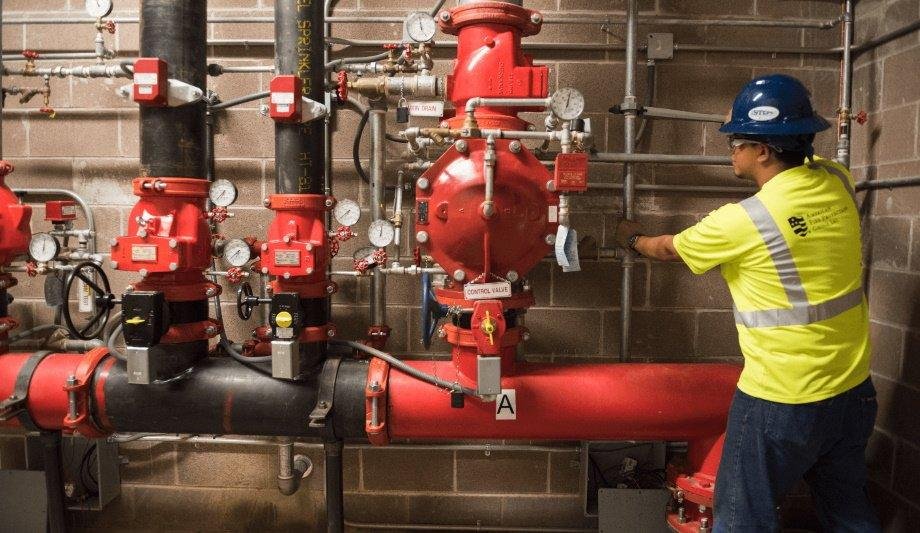Fire protection is a critical aspect of safety in any environment, be it residential, commercial, or industrial. In the event of a fire, having the right systems in place can mean the difference between minimal damage and catastrophic loss. There are four main types of fire protection systems: Fire Detection Systems, Fire Suppression Systems, Fire Extinguishers, and Passive Fire Protection Systems. Let’s delve into each of these systems to understand their importance and functionality.
Fire Detection Systems
Fire detection systems are designed to detect the presence of fire or smoke and alert occupants to the danger, allowing for timely evacuation and intervention. These systems utilize various technologies such as smoke detectors, heat detectors, flame detectors, and gas detectors. Smoke detectors, for example, are the most common type and work by sensing the presence of smoke particles in the air.
Types of Fire Detection Systems
- Smoke Detectors: Detect smoke particles in the air.
- Heat Detectors: Trigger an alarm when a certain temperature threshold is reached.
- Flame Detectors: Identify the presence of flames through optical sensors.
- Gas Detectors: Detect the presence of combustible gasses.
How Fire Detection Systems Work
Fire detection systems operate by continuously monitoring the environment for signs of fire or smoke. When triggered, they sound alarms and alert designated personnel or emergency services. Advanced systems may also integrate with building management systems for automated responses like activating sprinklers or closing fire doors.
Benefits of Fire Detection Systems
- Early detection of fires, allowing for prompt evacuation and intervention.
- Minimization of property damage and loss of life.
- Integration with other fire protection systems for enhanced safety measures.
Fire Suppression Systems
Fire suppression systems are designed to control or extinguish fires automatically or manually, depending on the type and severity of the fire. These systems use various agents such as water, foam, gas, or chemicals to suppress the flames and prevent the spread of fire.
Different Types of Fire Suppression Systems
- Water-Based Systems: Utilize water as the primary extinguishing agent, including sprinkler systems and deluge systems.
- Chemical-Based Systems: Use chemicals such as dry chemicals, wet chemicals, or clean agents to suppress fires.
- Gas-Based Systems: Deploy gasses like carbon dioxide or halon to smother fires by displacing oxygen.
- Foam-Based Systems: Employ foam to blanket the fire and suppress flammable vapors.
Functioning of Fire Suppression Systems
Fire suppression systems operate either automatically, triggered by heat or smoke sensors, or manually activated by occupants or emergency responders. Once activated, they release the extinguishing agent through nozzles or sprinklers, targeting the source of the fire and surrounding areas.
Advantages of Fire Suppression Systems
- Rapid response to fire emergencies, even in unoccupied areas.
- Effective suppression of different types of fires, including Class A, B, and C.
- Minimal water damage compared to traditional firefighting methods.
Fire Extinguishers
Fire extinguishers are portable devices used to extinguish small fires or contain them until the arrival of firefighters. They come in various types, each suitable for different classes of fires, such as Class A (ordinary combustibles), Class B (flammable liquids), and Class C (electrical fires). Australian Standard AS 2444 provides the guidelines for installation and distribution of portable fire extinguishers.
Various Types of Fire Extinguishers
- Water Extinguishers: Suitable for Class A fires involving solid materials like wood or paper.
- CO2 Extinguishers: Effective for Class B and C fires by displacing oxygen and cooling the fire.
- Dry Chemical Extinguishers: Versatile extinguishers for Class A, B, and C fires, using powdered chemicals to smother flames.
- Foam Extinguishers: Ideal for Class A and B fires, forming a barrier to prevent reignition.
Usage and Maintenance of Fire Extinguishers
Proper training is essential for using fire extinguishers effectively. Users should remember the acronym “PASS”: Pull the pin, Aim at the base of the fire, Squeeze the handle, and Sweep from side to side. Additionally, regular inspections and maintenance ensure that extinguishers are functional when needed.
Importance of Fire Extinguishers
Fire extinguishers provide the first line of defense against small fires, allowing occupants to contain or extinguish them before they escalate. They are crucial in workplaces, homes, and public spaces to promote safety and minimize fire damage.
Passive Fire Protection Systems
Passive fire protection systems are structural features designed to contain fires within compartments, preventing or delaying the spread of flames, smoke, and toxic gases. These systems include fire-resistant walls, doors, floors, and barriers that compartmentalize buildings and protect escape routes.
Explanation of Passive Fire Protection Systems
Passive fire protection works passively, meaning it does not require activation or human intervention to function. Instead, it relies on the inherent fire-resistant properties of building materials and construction techniques to limit the spread of fire and protect occupants.
Examples of Passive Fire Protection Measures
- Fire-Rated Walls and Doors AS 1905: Constructed using fire-resistant materials to withstand exposure to flames and heat.
- Fire Dampers and Smoke Curtains AS 1682: Installed in HVAC systems to prevent the spread of smoke and fire through ductwork.
- Fire resistant Sprays AS 4072.1 and AS 1530.4: Applied to structural elements like steel beams to expand and form a protective layer when exposed to high temperatures.
Benefits of Passive Fire Protection Systems
- Containment of fires within designated areas, allowing for safe evacuation and firefighting operations.
- Preservation of structural integrity, reducing the risk of building collapse during a fire.
- Compliance with building codes and regulations for enhanced fire safety measures.
Conclusion
Fire protection systems play a vital role in safeguarding lives and property from the devastating effects of fires. By implementing a combination of fire detection, suppression, extinguishment, and passive protection measures, individuals and organizations can effectively mitigate the risks associated with fire emergencies. Investing in these systems not only enhances safety but also provides peace of mind knowing that adequate measures are in place to respond to fire incidents promptly and efficiently. For all kind of fire services, consider Cybil Consults; your trusted partner for fire protection services.





